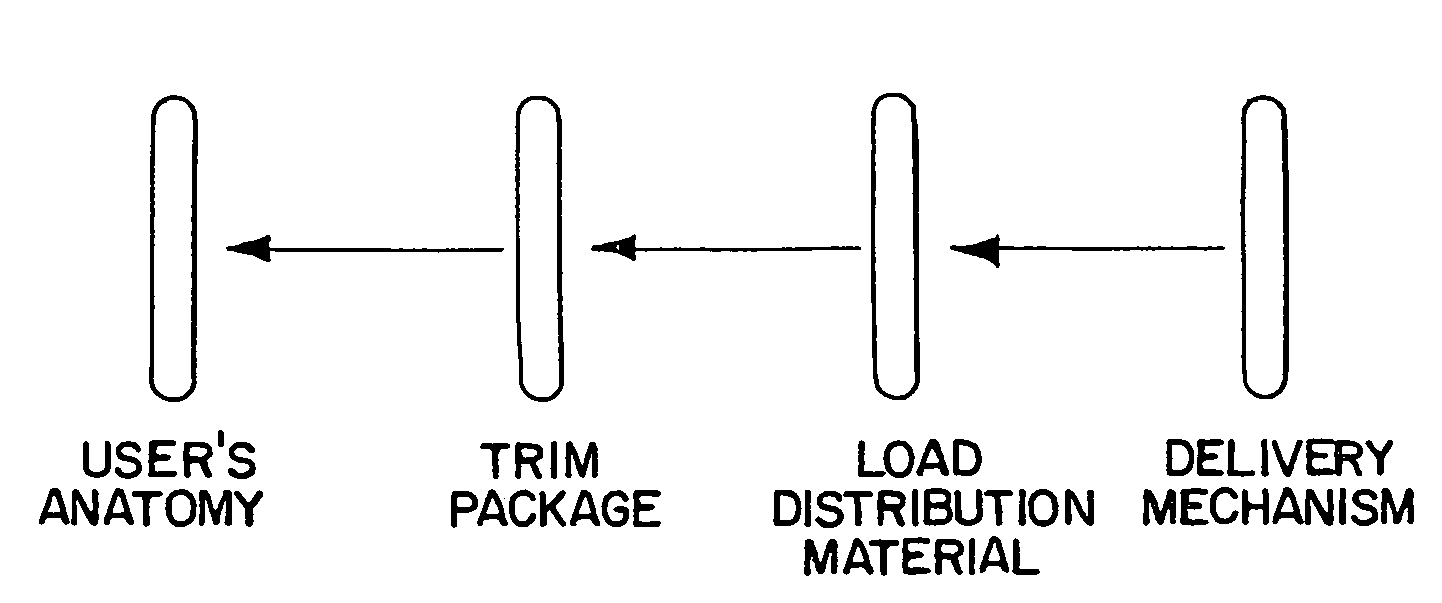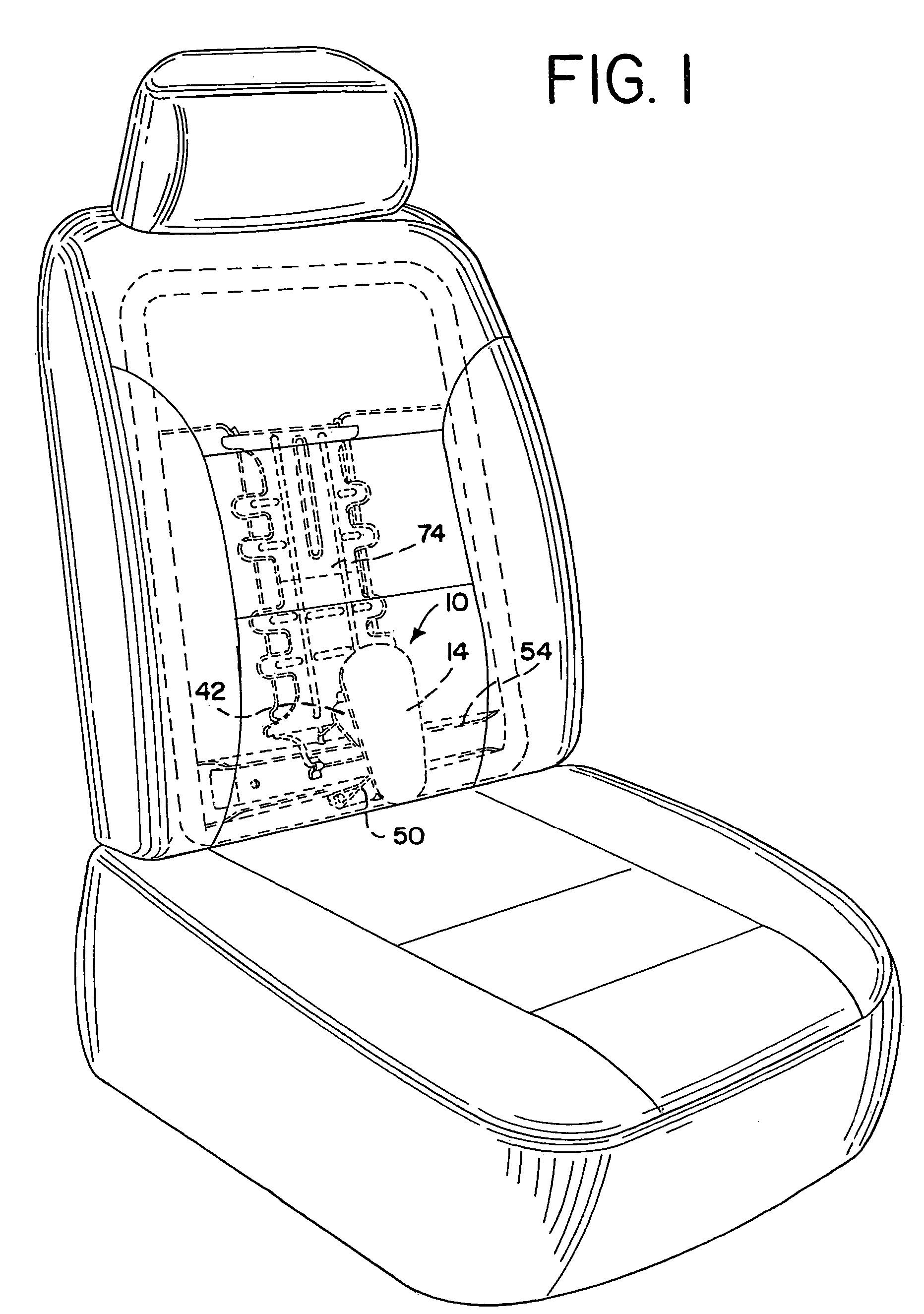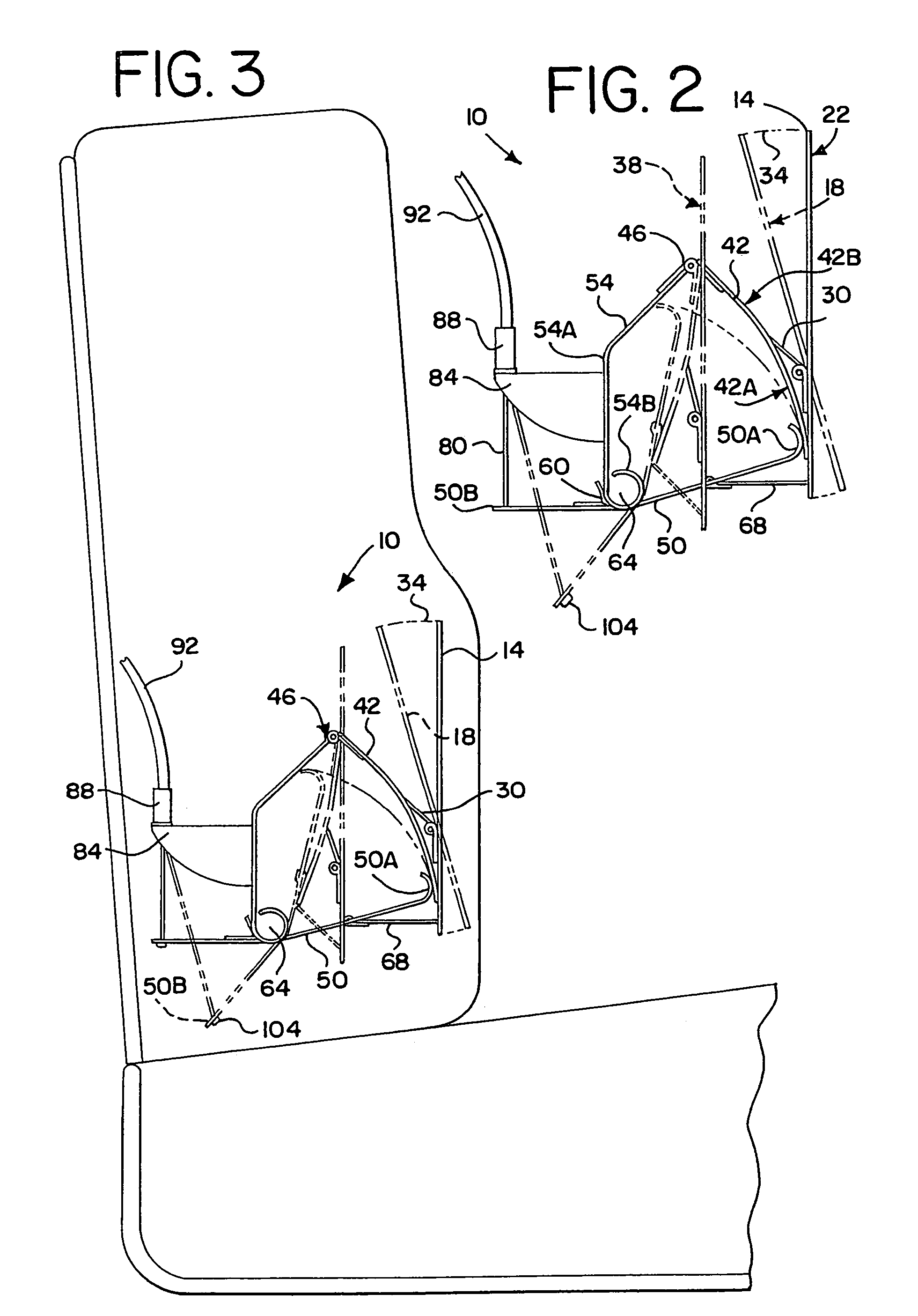Seat with adjustable support system
a sacral support and adjustable technology, applied in the field of seats with adjustable sacral support members, can solve the problems of insufficient back support of seats, increased sitting time of people in vehicles, so as to increase the comfort, endurance, and stability of users, and improve the efficiency of users. the effect of muscle control
- Summary
- Abstract
- Description
- Claims
- Application Information
AI Technical Summary
Benefits of technology
Problems solved by technology
Method used
Image
Examples
first embodiment
[0062]FIG. 1 illustrates the present invention in which sacral support member 14 provides a supporting surface engineered to support the sacrum and sacral-pelvic anatomy of a user. Sacral support member 14 is located at a lower, central portion of seatback frame 4. The location of sacral support member 14 coincides with the sacral area of a seated person. Sacral support member 14 preferably is formed of a substantially rigid material, such as steel, plastics, or carbon fiber, but materials providing a similar level of support can also be used. Sacral support member 14 is generally flat, pear-shaped, and oriented with a larger width at a top portion and a smaller width at a bottom portion. This shape and orientation coincides with the shape and orientation of the sacrum of a user. More specifically, an upper portion of sacral support member 14 has a horizontal width of approximately 3.25 inches. A lower portion of sacral support member 14 has a horizontal width of approximately 2.6 i...
second embodiment
[0087]As illustrated in FIGS. 9-11, in the invention, the lumbar support member and sacral support member may be adjusted through a range having four distinct support positions. In a first support position, illustrated at FIG. 9, lumbar support member 205 and sacral support member 214 are disengaged and provide little or no lumbar or sacral support. In a second position, illustrated at FIG. 10, lumbar support member 205 is engaged and provides maximum support, while sacral support member 214 is disengaged provides little support, albeit more support than when lumbar support member 205 is in a disengaged position. In a third position (not shown), the lumbar support member is disengaged and provides minimal lumbar support, while the sacral support member is fully engaged and provides maximum sacral support. In a fourth position, illustrated at FIG. 11, both the lumbar support member and the sacral support member are fully engaged and provide a maximum amount of sacral and lumbar suppo...
fifth embodiment
[0131]As illustrated in FIG. 28, a second configuration of sacral / lumbar support element 510 allows the synchronous delivery of both the sacral support member and the lumbar support with a first switch or control that operates take-up motor 507. In this respect, the device is configured as described regarding the first configuration of the However, the second configuration adds the ability to fine-tune the position of sacral support member 514 independent of the lumbar support by operating a second take-up motor 511. This is accomplished by providing a mechanism that overrides the position of toggle plate 520. Specifically, a second motor 511 controls actuator wire 582, which passes through cable housing 583. Cable housing 583 is secured by a loose-fit connector to toggle plate 520. A terminal end of actuator wire 582 is directly connected to lever arm 550. As a result, in operation, a user can deliver both the sacral support member and the lumbar support by activating a first swit...
PUM
 Login to View More
Login to View More Abstract
Description
Claims
Application Information
 Login to View More
Login to View More - R&D
- Intellectual Property
- Life Sciences
- Materials
- Tech Scout
- Unparalleled Data Quality
- Higher Quality Content
- 60% Fewer Hallucinations
Browse by: Latest US Patents, China's latest patents, Technical Efficacy Thesaurus, Application Domain, Technology Topic, Popular Technical Reports.
© 2025 PatSnap. All rights reserved.Legal|Privacy policy|Modern Slavery Act Transparency Statement|Sitemap|About US| Contact US: help@patsnap.com



